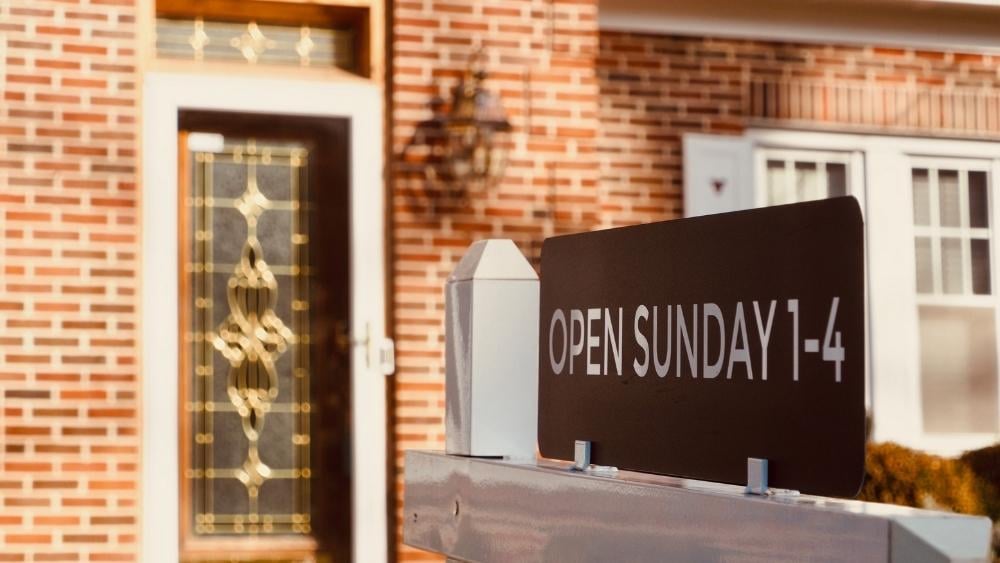For those selling a home during the COVID-19 pandemic, new challenges to making a sale disrupted many aspects of the process. Any occasion that could bring people together indoors was unsafe, so traditions like open houses were heavily limited by state and local restrictions.
Now, isolation measures mandated mask-wearing and social distancing are beginning to expire in most jurisdictions. This means that an open house is a more viable option than at the beginning of the pandemic. Still, concerns about extant Omicron variants and smaller but worrying resurgences in case numbers mean that it’s both courteous and important to implement COVID-safe practices to ensure the health of open house visitors.
Remember to check local and state ordinances to ensure in-person open houses are permitted events.
Require masking
Of all measures to make sure your open house event is COVID-friendly, mask-wearing is proven to be the most effective. While it is likely no longer mandatory where you live, asking all visitors to mask up upon entering is still good practice. Provide a box of surgical or K-N95 disposable masks, as many people will not have any.
Whether you agree with wearing masks or not, it’s better to be safe than sorry; you want potential buyers to remember all the great things about your home, not that it was where they got the coronavirus.
Sanitize and provide sanitizer
Regularly cleaning and sanitizing interior spaces is necessary for creating a COVID-safe environment. Cleaning is requisite to presenting an attractive home, but go beyond just the usual polishing up and ensure disinfecting surfaces properly.
People should also have clean hands, so setting up a sanitizer station for handwashing or using hand sanitizer is a great step to encourage this behavior. In fact, you can employ the now-common practice of having a united mask and sanitizer station, with both next to one another for extra convenience and a reminder to those taking a tour.
Go a step further and order branded masks and hand sanitizer for guests to keep. Feature your address, contact details, and perhaps basic information on your house. Potential buyers will be reminded of your place whenever they mask up or wash their hands!
Ask visitors to limit touching
While COVID-19 spreads primarily through respiratory droplets, surfaces can still carry contagion with sufficient exposure from an infected person. To mitigate the spread, request politely that touring guests refrain from touching as much as they can.
To make compliance easier, keep doors open to allow entry without using the doorknob. Turn on the lights so no one needs to touch light switches, which also enhances the appearance of any room, so make sure to keep most or all lights on during the entire open house.
Consider requiring reservations to limit capacity
If you are especially concerned with allowing for social distancing, requiring reservations ahead of time online or by calling will make sure there aren’t too many visitors in close proximity at any one time. Guests can sign up for a time slot and show up then. Or, set out a sign-in sheet and only allow a set number of people at a time. Those waiting around can look at outdoor areas in the meantime.
The downside to this, of course, is limiting the number of potential buyers who can visit the open house. But reservations are a way to make your event extra safe.
Remember to do the things that help all open houses succeed
Now that sufficient precautions are in place, focus on doing what open houses are meant to do – impress prospective buyers.
- Include a description of your home in an information packet, and put contact details there for you and your real estate agent. Set these out for people to take and keep.
- Think about staging the home if you feel that newer or different furniture would make it especially marketable compared to other similar homes. If you don’t stage, make sure to declutter and clean to an impeccable standard (and sanitize as mentioned before).
- Turn on the lights to show it off - interiors almost always look better when well-lit. This also keeps people from touching the light switches.
- Spread the news of your open house using social media and word of mouth if possible.
- Be a good host when you’re there. Water is okay. However, it isn’t recommended to provide food as some traditionally do, as eating requires the lowering or removal of masks.
- Remember to follow up with anyone who puts their name on the sign-in sheet. Send an email, text, or call to thank them for touring.
Finally - determine if a virtual open house is preferable
If you want to reach people who are extra cautious or isolating, virtual open houses are becoming a new norm as the pandemic levels off. It’s the safest bet by far. To make it deliver the same experience as an in-person open house, you need at least a camera and an internet connection.
You can choose to take people on a live tour using a video call platform like Zoom or FaceTime. This is more personal and allows for answering questions. Alternatively, some real estate agencies are becoming increasingly popular for pre-recorded videos or even high-tech 3D augmented interior models. Both options make it easy and safe to see your house from a distance.
The Bottom Line
Take advantage of the novelty of the steady return to post-pandemic normalcy and host a COVID-safe open house. You may find a surprising number of eager buyers.
Ready for a virtual open house tour for your next home? Brunswick Crossing has a variety of models and resort-style amenities. Take a tour today and explore the plethora of opportunities available to you.




